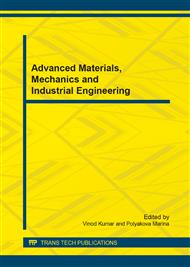p.424
p.428
p.432
p.436
p.442
p.453
p.459
p.463
p.467
An Effective System Identification Method of Small-Scale Unmanned Helicopter
Abstract:
In order to control an unmanned helicopter accurately and reliably, it is necessary to have a precise mathematical model of its dynamics. This paper presents a new timedomain identification method and process for full state space model of small-scale unmanned helicopters. The identification method is called ISAcwPEM (Improved Simulated Annealing combined with Prediction Error Method), which is not sensitive to initial point selection and doesn’t require frequency-sweeping inputs. Firstly, the primary parameters to be identified are selected by model sensitivity analysis. After that, the improved simulated annealing algorithm runs in a distributed computing platform to figure out a 13-order state space model of the SJTU T-REX700E small-scale unmanned helicopter (consisting of a cruise modal and a hover modal). Then the iterative Prediction Error Method (PEM) is used to optimize the model. In addition, the time-delay term and the trim term are estimated and added to the model. Finally, the effectiveness of the identification method is well validated by real outdoor flight experimental results.
Info:
Periodical:
Pages:
442-452
Citation:
Online since:
July 2014
Authors:
Price:
Сopyright:
© 2014 Trans Tech Publications Ltd. All Rights Reserved
Share:
Citation:


